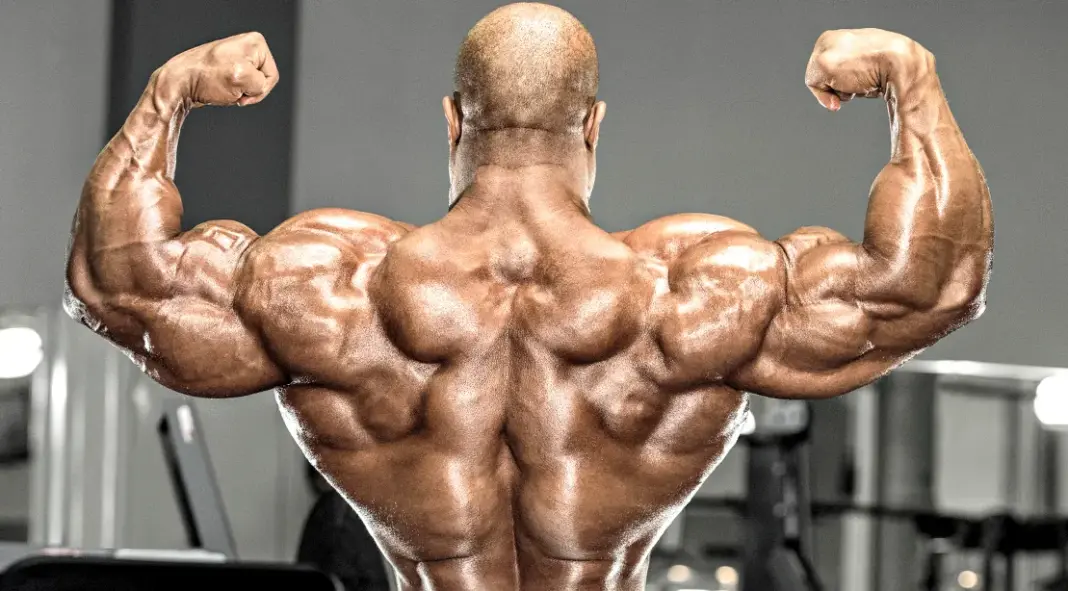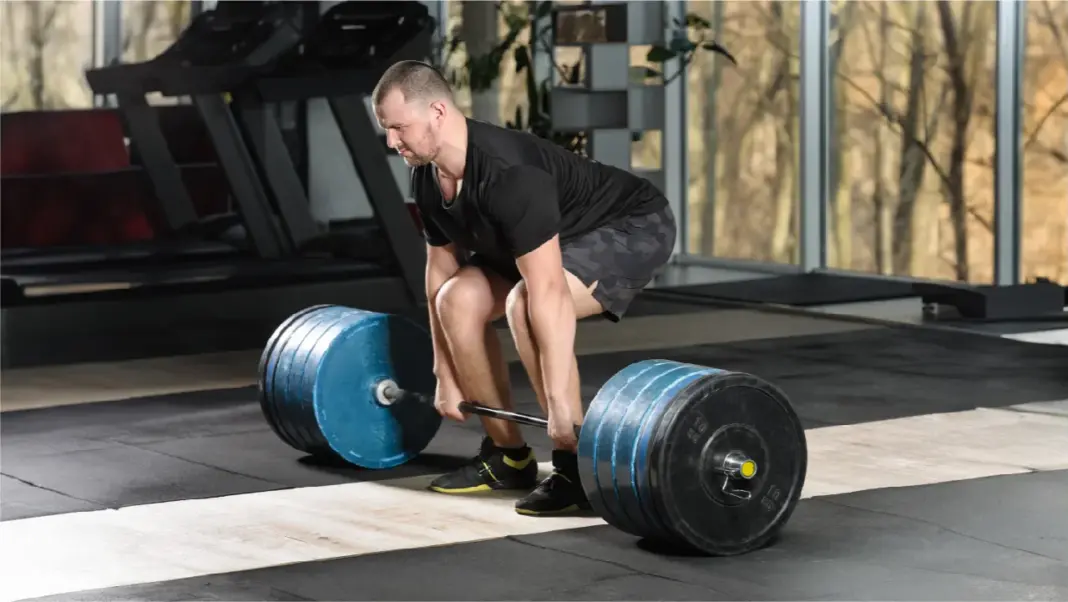How to Build a Thick Back: Rowing Movements That Add Density
A thick, dense back gives your physique real presence—front, side, or rear. Width gets all the attention (hello, lats), but thickness is what makes a back look powerful, not just wide.
Walk into any gym and you’ll see plenty of guys hitting lat pulldowns and pull-ups. That’s great for V-taper.
But if you want your physique to pop in a side pose, or your traps to look like armor from the back, you need to hammer your mid-back muscles with heavy, targeted rows.
This guide breaks down what builds back thickness, the best rowing movements to prioritize, and how to train for dense, 3D back development—whether you’re a beginner or an advanced lifter.
The Anatomy of Back Thickness
To grow a thick back, you need to focus on the muscles that run deep along your spine and across your upper and mid-back:
✅ Rhomboids (Major and Minor)
- Function: Retract the shoulder blades
- Visual: Adds “meat” between your scapulae
✅ Middle and Lower Trapezius
- Function: Pull and stabilize the shoulder girdle (1)
- Visual: Creates depth around the center of your upper back
✅ Erector Spinae
- Function: Extends the spine, keeps your torso upright
- Visual: Thickens your lower back and supports compound lifts
✅ Teres Major and Minor
- Function: Assists shoulder and arm movement
- Visual: Adds detail around the back of the armpits
While the lats play a role in thickness, they’re mostly responsible for width. For a truly 3D back, the above muscles are your real targets—and rows are how you reach them.
Why Rows Are Essential for Back Thickness
Rows are horizontal pulling exercises. Unlike vertical pulling (pull-ups, pulldowns), rows force the mid and upper back to work harder to pull the shoulder blades back and stabilize the spine.
What makes rows so effective?
- Scapular retraction = rhomboid and trap engagement
- Isometric tension = erector and spinal muscle activation
- Load tolerance = you can lift heavy and apply progressive overload
You won’t build a thick back doing just lat pulldowns and curls. You build it by moving serious weight with proper row mechanics.
🔟 The Best Rowing Movements for Back Thickness
These exercises are ranked based on effectiveness, overload potential, and muscle activation.
-
Barbell Bent-Over Row
Why it works: A staple of old-school bodybuilding and powerlifting. Hits the entire back—especially mid traps and rhomboids.
- Form Tip: Stay bent at 45°, brace your core, and pull to your lower chest or upper abs.
- Grip Variations: Overhand = upper back; Underhand = more lats and biceps.
- Sets/Reps: 4 sets of 8–10 reps
-
T-Bar Row (Chest-Supported or Freestanding)
Why it works: Focuses on back thickness with less lower back fatigue than bent-over rows.
- Form Tip: Keep elbows close to your torso and drive with your upper back.
- Chest-supported version is better for hypertrophy with strict form.
- Sets/Reps: 3–4 sets of 10–12 reps
- Dumbbell Row (Single Arm)
Why it works: Great for isolating each side and correcting imbalances. Excellent range of motion and scapular retraction.
- Form Tip: Pull the dumbbell toward your hip, not your armpit.
- Bonus: Improves grip strength and core stability.
- Sets/Reps: 3 sets of 10–12 per side
-
Seal Row (Chest-Supported Barbell Row)
Why it works: Strict form isolates the mid-back and traps by removing momentum and leg drive.
- Setup Tip: Lie on a bench set high enough to let the barbell clear your feet.
- Form Tip: Squeeze at the top, control the negative for max engagement.
- Sets/Reps: 3 sets of 10–15
-
Cable Row (Neutral or Wide Grip)
Why it works: Offers constant tension and multiple grip options to target different areas of the back.
- Neutral grip: More lats and erectors
- Wide grip: More rhomboids and upper traps
- Sets/Reps: 3–4 sets of 12–15 reps
-
Machine Row (Hammer Strength, Iso-Lateral)
Why it works: Great for safely lifting heavy with excellent control and targeting.
- Unilateral Option: Let you focus on each side independently
- Bonus: Easy to use drop sets and progressive overload
- Sets/Reps: 3 sets of 10–12
-
Inverted Row (Bodyweight or Weighted)
Why it works: Scalable for all levels and great for building rowing endurance and technique.
- Form Tip: Keep your body in a straight line, pull chest to the bar
- Progression: Elevate feet or wear a weighted vest
- Sets/Reps: 3 sets to failure or 10–15 reps
-
Kroc Row (Heavy Dumbbell Row)
Why it works: A high-rep, heavy dumbbell row that builds raw size in the lats and traps.
- Form Tip: Use straps, go heavy, and aim for 20+ reps per set
- Warning: Form gets loose, but the goal is brute overload
- Sets/Reps: 2–3 sets of 15–25 reps
-
Meadows Row (Landmine Row)
Why it works: Unique angle and unilateral focus hits the upper traps and mid-back with precision.
- Form Tip: Row explosively but stay tight—don’t twist
- Bonus: Easy to add volume without CNS burnout
- Sets/Reps: 3 sets of 12 per side
-
Barbell Shrug (Strict Form)
Why it works: Not technically a row, but builds trap thickness and rounds out upper back development.
- Form Tip: Hold each shrug for a 2-second peak contraction
- Use as a finisher after heavier rows or pulls
- Sets/Reps: 3–4 sets of 12–20 reps
Sample Back Thickness Workout
💪 Back Thickness Focus Day (Intermediate/Advanced)
- Barbell Row – 4×8
- T-Bar Row – 3×10
- Dumbbell Row (Heavy) – 3×12/side
- Wide-Grip Cable Row – 3×15
- Seal Row or Shrug – 3×12–20
- Optional Finisher: Inverted Rows – 2 sets to failure
Tips for Building a Thicker Back
✅ Train With Intentional Scapular Retraction
Just pulling weight isn’t enough. You must actively retract your shoulder blades at the top of every row.
✅ Don’t Shorten the Range of Motion
Partial reps cheat your development. Use a full stretch and full squeeze—especially on dumbbell and cable rows.
✅ Mix Free Weights and Machines
- Free weights = better loading, stability, and athletic development
- Machines = better isolation and reduced joint strain
✅ Use Progressive Overload
Track your weight, reps, and sets. Aim to increase load or reps every 1–2 weeks on core rowing lifts.
✅ Don’t Overemphasize Lats
Lats get plenty of attention already. If you want real thickness, prioritize horizontal pulling and trap/rhomboid recruitment.
Common Mistakes That Kill Back Density
- Relying only on pulldowns or pull-ups – Vertical pulling is not enough
- Using too much momentum – Swinging a barbell or dumbbell doesn’t build the mid-back
- Neglecting lower traps and erectors – These muscle groups stabilize and thicken your lower-mid back
- Doing rows too light or too fast – Rows should be heavy, controlled, and deliberate
Final Thoughts: How to Train for a Thick, Powerful Back
Thickness takes time. It’s not just about muscle—it’s about control, tension, and consistent overload. Rows are your weapon. Learn to do them right, load them smart, and rotate variations as you grow stronger.
If your back looks flat or soft—even though you’ve been training—it’s time to double down on horizontal pulling, time under tension, and targeted thickness work.
With the right programming and dedication, you’ll build a back that doesn’t just look wide—it looks deep, powerful, and complete.
🔗 Recommended Next Reads:
- The 10 Best Exercises for a Wider Back
- Back Muscle Anatomy Explained
- Deadlifts for Back Growth: Do They Really Work?





